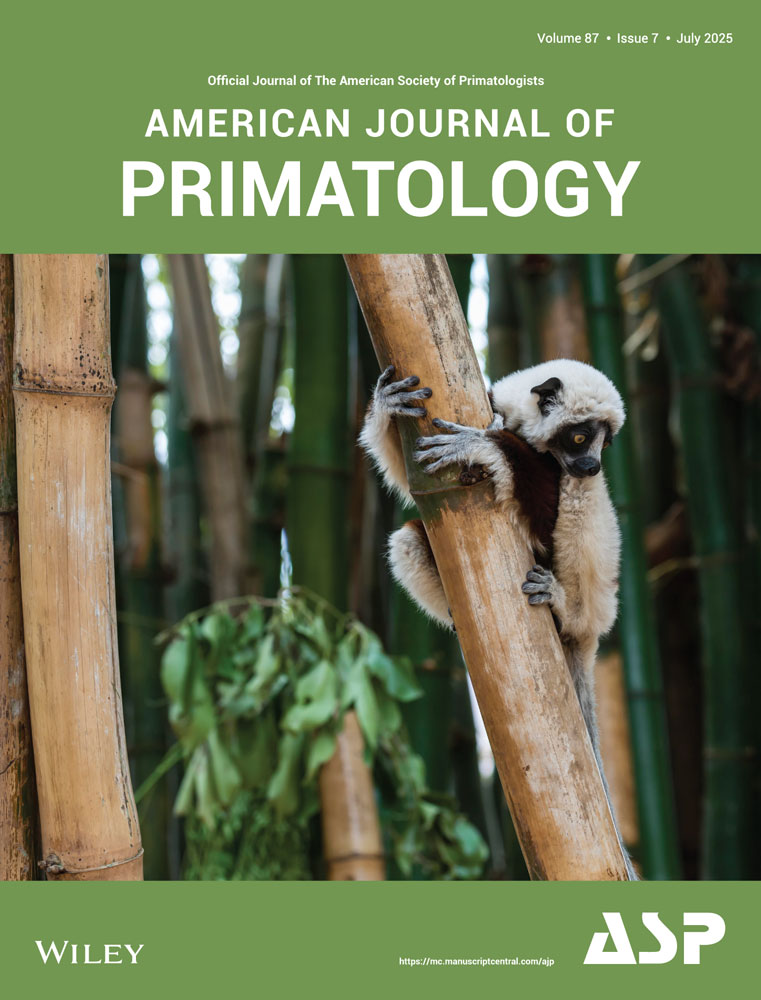Correlation between urinary pregnanediol glucuronide and basal body temperature in female orangutans, Pongo pygmaeus
Abstract
Changes in basal body temperature (BBT) in relation to the menstrual cycle were investigated in three adult female orangutans (Pongo pygmaeus). In particular, the relationships of BBT to urinary estrone conjugates (EC) and to pregnanediol glucuronide (PDG) were examined using two of the females during two cycles each. Radiotelemetry transmitters were implanted peritoneally to record core body temperatures. Radio signals were received approximately every 2 min, 24 h per day. Because temperatures during the period 0300–0400 h were most stable (i.e., were less likely to be affected by confounding variables such as activity), a mean of these values was used to calculate daily BBT. BBT showed a highly significant positive correlation with PDG but not with EC. Menstrual phases were associated with declining or trough levels of BBT. Although changes in BBT were not sufficiently distinct to predict or to preclsely identify the time of ovulation, the strong association between BBT and PDG suggests that radiotelemetry of BBT may be useful in monitoring ovarian cycles, especially the luteal phase, in this species. © 1994 Wiley-Liss, Inc.




